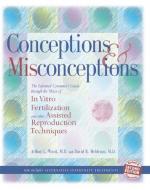|
This section contains 621 words (approx. 3 pages at 300 words per page) |

|
Gametes in plants—unlike those of animals—are not produced directly by meiotic division of a diploid organism, but by an entirely different haploid plant, in a process known as alternation of generations. In this process, embryos grow into sporophytes, and sporophytes release haploid spores. Spores grow into gametophytes, and gametophytes release gametes. Ga-metes fuse to form embryos.
In mosses and liverworts, the embryo produces a small, but visible, sporophyte in which thousands of spores are produced through meiosis. The sporophyte that we see—the capsule and stalk of the moss—remains dependent on the dominant gametophyte (which is the vegetative moss plant).
In ferns and so-called fern allies, the embryo produces a large sporophyte as the dominant generation (which is recognized as the vegetative plant). Keen observation is needed to see the free-living fern gametophytes, as they rarely reach 1/4 inch, but this is...
|
This section contains 621 words (approx. 3 pages at 300 words per page) |

|


